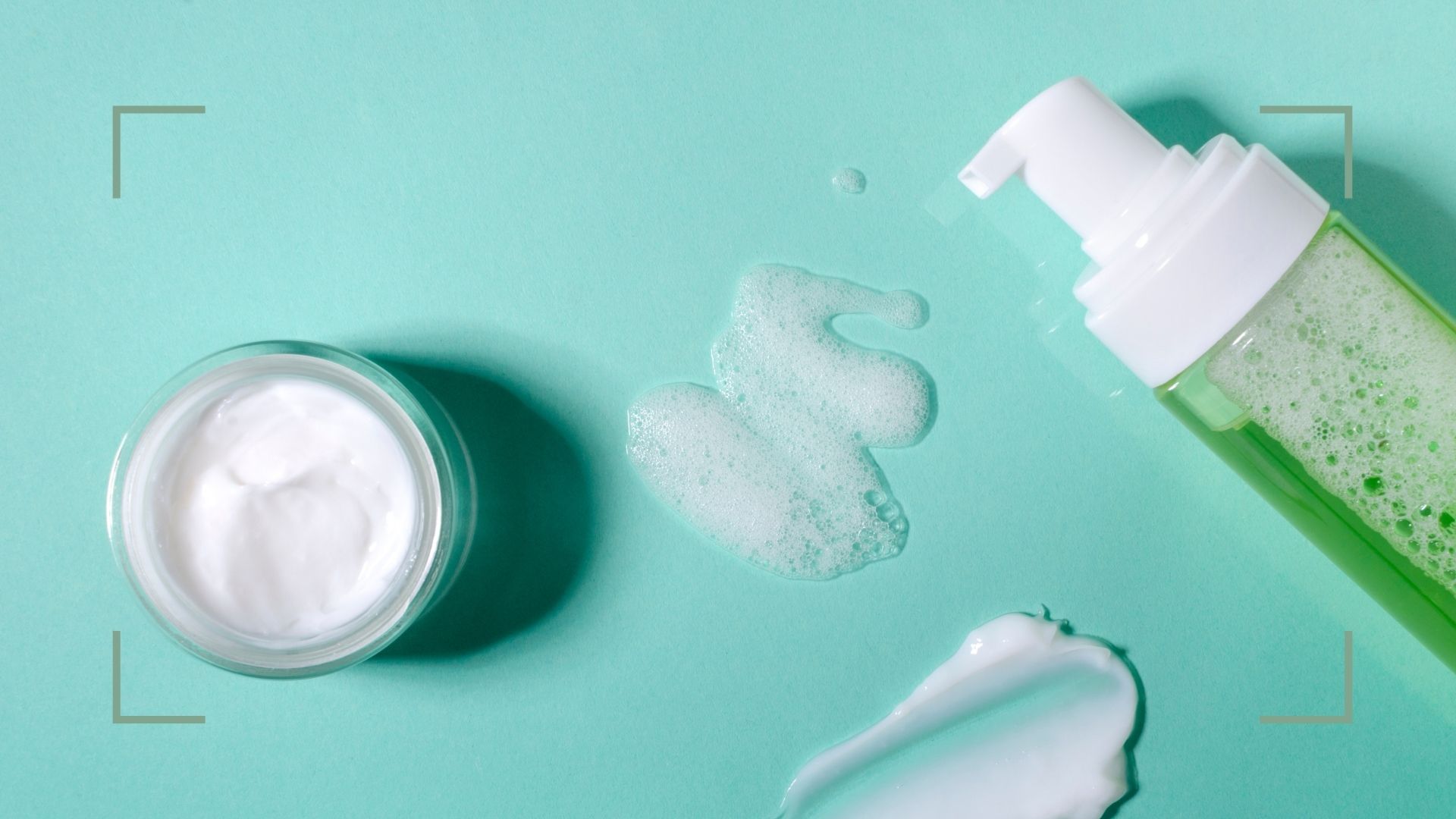Glycolic acid vs salicylic acid: which exfoliator is right for your skin?
Differences, benefits, and how glycolic acid vs salicylic acid work in your routine


The glycolic acid vs salicylic acid debate is a fairly common one in skincare. Both ingredients can exfoliate your skin to achieve a clearer complexion, but each has its own specific way of doing so and lends itself better to particular skin types.
Do you want to smooth out your skin texture, soften fine lines and fade pigmentation? Or do you want to deep-clean pores, decongest your skin and dissolve excess oil? Your specific goals will help you make the choice between glycolic acid vs salicylic acid in your skincare routine.
While both belong to the wider skincare acid group, they are more like distant cousins than twins. Glycolic acid sits within the alpha hydroxy acid (AHA) family, while salicylic acid is a beta hydroxy acid (BHA) and that distinction makes a world of difference in terms of actions and results. Find out how these two skincare ingredients behave and their individual benefits to find out which one will help you achieve your skin goals.
Glycolic acid vs salicylic acid: your expert guide
What are glycolic and salicylic acid?
What is glycolic acid?
“Glycolic acid is an AHA that, because of its small molecular weight, can easily pass through the skin barrier,” says Dr P. Daniel Ward, plastic surgeon at Form Rx Skincare. Beneath the barrier, glycolic dissolves the joins between old, dead cells on the surface, helping them to shed to reveal fresher-looking layers. “Glycolic acid is a great exfoliator, especially for those looking to temper the effects of aging,” agrees Dr Ward. It's often used in pro treatments such as the VI Peel, as well as at-home products.
What is salicylic acid?
Like its cousin, salicylic acid is also adept at getting rid of unwanted stuff loitering within the skin, but instead of dead cells, it shifts congestion. “Salicylic acid is a BHA and is also an exfoliator, working as a kind of ‘medical mop’ for excess oil, particularly benefiting those with acne-prone skin,” explains Dr. Ward. “Focusing on the surface of the skin, salicylic acid is also able to clear out and clean up clogged pores.” This makes salicylic one of the best pore minimizers in acid form.
Glycolic acid vs salicylic acid: key differences
- Exfoliating behavaiour: “Glycolic acid seeps into the skin and works from the inside-out, and salicylic acid works from the outside-in,” says Dr Ward.
- Skin texture: “Glycolic acid stimulates collagen and loosens the bonds between the top layer of your epidermis to reveal the good skin you have underneath,” explains Daisy Jing, founder, and CEO of Banish.
- Pores and oil: “Salicylic acid, on the other hand, is a BHA. This makes it great at penetrating deep into your skin,” says Jing. “It helps unclog your pores and acts as an anti-inflammatory agent to help pus-filled zits go down easily.”
Put simply, glycolic acid is a more effective ingredient in the best skincare products for a smooth, fresh texture and to help shift old sun-damaged pigmentation. Salicylic acid is a powerful blemish and acne treatment and works best in a skincare routine for acne.
How to use glycolic acid and salicylic acid

Now for the big question - how to exfoliate your face with these acids? In a nutshell, “they are chemical exfoliants,” says Dr Sandy Skotnicki, dermatologist and author of Beyond Soap. They are effective because they are strong, and they should be treated as such:
Sign up to our free daily email for the latest royal and entertainment news, interesting opinion, expert advice on styling and beauty trends, and no-nonsense guides to the health and wellness questions you want answered.
- Start slowly: As with any active, begin with sporadic use and build up your tolerance over time. “I recommend using them once or twice weekly,” says Dr Skotnicki.
- Apply at night: “Both glycolic and salicylic acid should be incorporated into your skincare night routine because both acids make your skin more susceptible to sunlight,” says Dr. Ward.
- Cleanse first: Whichever you choose between glycolic acid vs salicylic acid, both work best on freshly cleansed skin. This will allow the molecules to penetrate and exfoliate most effectively.
- Swipe it on: Both acids tend to appear in the best toners for exfoliation, usually watery formulations to be conveniently swiped on with a pad (eco-friendly re-usable please!)
- Hydrate and protect: After exfoliating, follow with your hydrating and replenishing serums and creams. Use SPF the next day to protect fresh skin cells from UV damage.
Who shoudn't use these ingredients?
Here's where we find some common ground in the debate of glycolic acid vs salicylic acid. Both ingredients can dry out the skin, especially if you are prone to dryness or go overboard with your exfoliating acid. As well as introducing them slowly, use discretion in the other products you choose to apply alongside these treatments.
For example, even the best retinol creams can cause problems when used back-to-back with acids. “Other products that deliberately dry out the skin, like retinol, should not be used with either glycolic or salicylic acid,” advises Dr. Ward. “Doing so would likely lead to irritated skin and redness.” If you don't want to have to choose between glycolic acid vs retinol, try using them on alternate nights instead. Layering multiple highly active ingredients on top of each other won’t always speed up the results. In fact, it could make your skin look and feel worse.
Glycolic acid vs salicylic acid: w&h verdict
As with many skincare ingredients, weighing up glycolic acid vs salicylic acid really comes down to your skin type and desired results. While both effectively exfoliate, they do have different purposes, so use whichever one suits your needs best.
If smoothing out a rough or dull complexion is your goal, along with improved collagen production for plumpness and an even skin tone, go with glycolic acid. If you want to fight excess oil, pimples and acne, salicylic acid might be the solution for you.
It's also worth bearing in mind that, as long as you're cautious, you can include both salicylic and glycolic acids in your routine for the best of both worlds. Whatever you choose, use caution when pairing these ingredients with other products. If you have sensitive skin It’s never a bad idea to consult with a dermatologist before embarking on any new regimen.
woman&home thanks Dr. P. Daniel Ward of Form Rx Skincare Daisy Jing of Banish and Dr. Sandy Skotnicki, dermatologist and author of Beyond Soap for their time and expertise

As woman&home's Beauty Channel Editor, Fiona Mckim loves to share her 15+ years of industry intel on womanandhome.com and Instagram (@fionamckim if you like hair experiments and cute shih-tzus). After interning at ELLE, Fiona joined woman&home as Assistant Beauty Editor in 2013 under industry legend Jo GB, who taught her to understand ingredients and take a cynical approach to marketing claims. She has since covered every corner of the industry, interviewing dermatologists and celebrities from Davina McCall to Dame Joan Collins, reporting backstage at London Fashion Week and judging the w&h Beauty Awards.